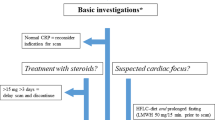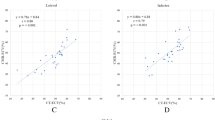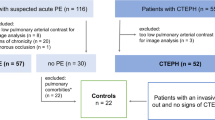Abstract
Purpose
This study aimed to evaluate whether granzyme B (GzmB)-targeted positron emission tomography (PET) imaging agent (68 Ga-grazytracer) can characterize cardiac inflammation and remodeling in myocardial infarction (MI).
Methods
Rats with MI were subjected to GzmB-targeted PET/CT on post-operative days 1, 3, 6, 14, and 28. Autoradiography, Masson staining, immunohistochemistry, and ELISA were performed to verify the inflammatory response and remodeling after MI in vitro. Rats were treated with GzmB inhibitor Z-IETD-FMK to improve cardiac remodeling. Cardiac function tests were performed by echocardiography at 6 weeks after MI.
Results
The highest uptake of 68 Ga-grazytracer was observed on day 3 after MI compared with the values obtained on the other days (0.294 ± 0.03% ID/g at 3 days vs. 0.122 ± 0.01% ID/g in the sham group, P < 0.001). Immunohistochemistry showed significantly high expression of GzmB and CD8, in line with the PET/CT imaging results. Autoradiography revealed 68 Ga-grazytracer accumulation in the infarcted myocardium. The 68 Ga-grazytracer uptake of treated rats was significantly reduced compared with that in the MI groups (0.184 ± 0.03%ID/g vs. 0.286 ± 0.03%ID/g; P < 0.001). Echocardiography showed that the left ventricular ejection fraction was lower in the MI groups than in the ischemia reperfusion group. GzmB inhibitor treatment was shown to be effective in improving cardiac function without significantly shortening infarct size.
Conclusions
This study demonstrated the potential of 68 Ga-grazytracer imaging to delineate adverse inflammatory responses and pathological cardiac remodeling, which can help predict heart function. PET/CT imaging-guided therapy may reduce myocardial injury and improve heart function in MI.







Similar content being viewed by others
Data availability
The data underlying this article will be shared on reasonable request to the corresponding author.
References
Dick SA, Macklin JA, Nejat S, Momen A, Clemente-Casares X, Althagafi MG, et al. Self-renewing resident cardiac macrophages limit adverse remodeling following myocardial infarction. Nat Immunol. 2019;20:29–39. https://doi.org/10.1038/s41590-018-0272-2.
Tarkin JM, Calcagno C, Dweck MR, Evans NR, Chowdhury MM, Gopalan D, et al. (68)Ga-DOTATATE PET identifies residual myocardial inflammation and bone marrow activation after myocardial infarction. J Am Coll Cardiol. 2019;73:2489–91. https://doi.org/10.1016/j.jacc.2019.02.052.
Hess A, Borchert T, Ross TL, Bengel FM, Thackeray JT. Characterizing the transition from immune response to tissue repair after myocardial infarction by multiparametric imaging. Basic Res Cardiol. 2022;117:14. https://doi.org/10.1007/s00395-022-00922-x.
Gabriel-Costa D. The pathophysiology of myocardial infarction-induced heart failure. Pathophysiology. 2018;25:277–84. https://doi.org/10.1016/j.pathophys.2018.04.003.
Nielsen R, Moller N, Gormsen LC, Tolbod LP, Hansson NH, Sorensen J, et al. Cardiovascular effects of treatment with the ketone body 3-hydroxybutyrate in chronic heart failure patients. Circulation. 2019;139:2129–41. https://doi.org/10.1161/CIRCULATIONAHA.118.036459.
Hess A, Derlin T, Koenig T, Diekmann J, Wittneben A, Wang Y, et al. Molecular imaging-guided repair after acute myocardial infarction by targeting the chemokine receptor CXCR4. Eur Heart J. 2020;41:3564–75. https://doi.org/10.1093/eurheartj/ehaa598.
Nahrendorf M, Hoyer FF, Meerwaldt AE, van Leent MMT, Senders ML, Calcagno C, et al. Imaging cardiovascular and lung macrophages with the positron emission tomography sensor (64)Cu-Macrin in mice, rabbits, and pigs. Circ Cardiovasc Imaging. 2020;13:e010586. https://doi.org/10.1161/CIRCIMAGING.120.010586.
Santos-Zas I, Lemarie J, Zlatanova I, Cachanado M, Seghezzi JC, Benamer H, et al. Cytotoxic CD8(+) T cells promote granzyme B-dependent adverse post-ischemic cardiac remodeling. Nat Commun. 2021;12:1483. https://doi.org/10.1038/s41467-021-21737-9.
Santos-Zas I, Lemarie J, Tedgui A, Ait-Oufella H. Adaptive immune responses contribute to post-ischemic cardiac remodeling. Front Cardiovasc Med. 2018;5:198. https://doi.org/10.3389/fcvm.2018.00198.
Zeglinski MR, Granville DJ. Granzymes in cardiovascular injury and disease. Cell Signal. 2020;76:109804. https://doi.org/10.1016/j.cellsig.2020.109804.
Santiago L, Castro M, Sanz-Pamplona R, Garzon M, Ramirez-Labrada A, Tapia E, et al. Extracellular granzyme A promotes colorectal cancer development by enhancing gut inflammation. Cell Rep. 2020;32:107847. https://doi.org/10.1016/j.celrep.2020.107847.
Zhou H, Wang Y, Xu H, Shen X, Zhang T, Zhou X, et al. Noninvasive interrogation of CD8+ T cell effector function for monitoring early tumor responses to immunotherapy. J Clin Invest. 2022;132:e161065. https://doi.org/10.1172/JCI161065.
Tian J, Zheng Y, Mou T, Yun M, Tian Y, Lu Y, et al. Metformin confers longitudinal cardiac protection by preserving mitochondrial homeostasis following myocardial ischemia/reperfusion injury. Eur J Nucl Med Mol Imaging. 2023;50:825–38. https://doi.org/10.1007/s00259-022-06008-z.
Ke DQ, Chen ZY, Li ZL, Huang X, Liang H. Target inhibition of caspase-8 alleviates brain damage after subarachnoid hemorrhage. Neural Regen Res. 2020;15:1283–9. https://doi.org/10.4103/1673-5374.272613.
Hu S, Gao Y, Gao R, Wang Y, Qu Y, Yang J, et al. The selective STING inhibitor H-151 preserves myocardial function and ameliorates cardiac fibrosis in murine myocardial infarction. Int Immunopharmacol. 2022;107:108658. https://doi.org/10.1016/j.intimp.2022.108658.
Swirski FK, Nahrendorf M. Cardioimmunology: the immune system in cardiac homeostasis and disease. Nat Rev Immunol. 2018;18:733–44. https://doi.org/10.1038/s41577-018-0065-8.
Boukouaci W, Lauden L, Siewiera J, Dam N, Hocine H-R, Khaznadar Z, et al. Natural killer cell crosstalk with allogeneic human cardiac-derived stem/progenitor cells controls persistence. Cardiovasc Res. 2014;104:290–302. https://doi.org/10.1093/cvr/cvu208.
Martinez FJ, Collard HR, Pardo A, Raghu G, Richeldi L, Selman M, et al. Idiopathic pulmonary fibrosis. Nat Rev Dis Primers. 2017;3:17074. https://doi.org/10.1038/nrdp.2017.74.
Saito Y, Kondo H, Hojo Y. Granzyme B as a novel factor involved in cardiovascular diseases. J Cardiol. 2011;57:141–7. https://doi.org/10.1016/j.jjcc.2010.10.001.
Abbate A, Kontos MC, Grizzard JD, Biondi-Zoccai GG, Van Tassell BW, Robati R, et al. Interleukin-1 blockade with anakinra to prevent adverse cardiac remodeling after acute myocardial infarction (Virginia Commonwealth University Anakinra Remodeling Trial [VCU-ART] Pilot study). Am J Cardiol. 2010;105:1371-7 e1. https://doi.org/10.1016/j.amjcard.2009.12.059.
Ilatovskaya DV, Pitts C, Clayton J, Domondon M, Troncoso M, Pippin S, et al. CD8(+) T-cells negatively regulate inflammation post-myocardial infarction. Am J Physiol Heart Circ Physiol. 2019;317:H581–96. https://doi.org/10.1152/ajpheart.00112.2019.
Gao S, Li X, Jiang Q, Liang Q, Zhang F, Li S, et al. PKM2 promotes pulmonary fibrosis by stabilizing TGF-beta1 receptor I and enhancing TGF-beta1 signaling. Sci Adv. 2022;8:eabo0987. https://doi.org/10.1126/sciadv.abo0987.
Nahrendorf M, Frantz S, Swirski FK, Mulder WJ, Randolph G, Ertl G, et al. Imaging systemic inflammatory networks in ischemic heart disease. J Am Coll Cardiol. 2015;65:1583–91. https://doi.org/10.1016/j.jacc.2015.02.034.
Hicks RJ, Roselt PJ, Kallur KG, Tothill RW, Mileshkin L. FAPI PET/CT: will it end the hegemony of (18)F-FDG in oncology? J Nucl Med. 2021;62:296–302. https://doi.org/10.2967/jnumed.120.256271.
Adrain C, Murphy BM, Martin SJ. Molecular ordering of the caspase activation cascade initiated by the cytotoxic T lymphocyte/natural killer (CTL/NK) protease granzyme B. J Biol Chem. 2005;280:4663–73. https://doi.org/10.1074/jbc.M410915200.
Ikemoto T, Hojo Y, Kondo H, Takahashi N, Hirose M, Nishimura Y, et al. Plasma granzyme B as a predicting factor of coronary artery disease–clinical significance in patients with chronic renal failure. J Cardiol. 2009;54:409–15. https://doi.org/10.1016/j.jjcc.2009.06.009.
Kondo H, Hojo Y, Tsuru R, Nishimura Y, Shimizu H, Takahashi N, et al. Elevation of plasma granzyme B levels after acute myocardial infarction. Circ J. 2009;73:503–7. https://doi.org/10.1253/circj.cj-08-0668.
Carrick D, Haig C, Rauhalammi S, Ahmed N, Mordi I, McEntegart M, et al. Pathophysiology of LV remodeling in survivors of STEMI: inflammation, remote myocardium, and prognosis. JACC Cardiovasc Imaging. 2015;8:779–89. https://doi.org/10.1016/j.jcmg.2015.03.007.
Zhao S. Letter to the editor: is it time for imaging to level with pathology? Int J Cardiovasc Imaging. 2020;36:2249–50. https://doi.org/10.1007/s10554-020-01936-z.
De Villiers C, Riley PR. Mouse models of myocardial infarction: comparing permanent ligation and ischaemia-reperfusion. Dis Model Mech. 2020;13:dmm046565. https://doi.org/10.1242/dmm.046565.
De Celle T, Cleutjens JP, Blankesteijn WM, Debets JJ, Smits JF, Janssen BJ. Long-term structural and functional consequences of cardiac ischaemia-reperfusion injury in vivo in mice. Exp Physiol. 2004;89:605–15. https://doi.org/10.1113/expphysiol.2004.027649.
El-Mesallamy HO, Hamdy NM, El-Etriby AK, Wasfey EF. Plasma granzyme B in ST elevation myocardial infarction versus non-ST elevation acute coronary syndrome: comparisons with IL-18 and fractalkine. Mediators Inflamm. 2013;2013:343268. https://doi.org/10.1155/2013/343268.
Shabanzadeh AP, D’Onofrio PM, Monnier PP, Koeberle PD. Targeting caspase-6 and caspase-8 to promote neuronal survival following ischemic stroke. Cell Death Dis. 2015;6:e1967. https://doi.org/10.1038/cddis.2015.272.
Wan E, Yeap XY, Dehn S, Terry R, Novak M, Zhang S, et al. Enhanced efferocytosis of apoptotic cardiomyocytes through myeloid-epithelial-reproductive tyrosine kinase links acute inflammation resolution to cardiac repair after infarction. Circ Res. 2013;113:1004–12. https://doi.org/10.1161/CIRCRESAHA.113.301198.
Stelekati E, Bahri R, D’Orlando O, Orinska Z, Mittrucker HW, Langenhaun R, et al. Mast cell-mediated antigen presentation regulates CD8+ T cell effector functions. Immunity. 2009;31:665–76. https://doi.org/10.1016/j.immuni.2009.08.022.
Acknowledgements
We thank Yi Tian and Tiantian Mou (Department of Nuclear Medicine, Beijing Anzhen Hospital) for their help in PET/CT imaging and MI models establishment.
Funding
This research was supported by the National Key Research and Development Program of China (No. 2021YFF0501400 and 2021YFF0501404) and National Natural Science Foundation of China (No. 22277002 and 92059101).
Author information
Authors and Affiliations
Contributions
All authors’ material preparation and animal procedures were performed by Hongchuang Xu and Zhuxin Wei. Data collection and analysis were performed by Hongchuang Xu and Zhuxin Wei. Hongchuang Xu, Zhuxin Wei, Bixi Chen, Jiaxin Wang, Haoyu Weng and Jianping Li contributed to the study conception and design. Zhuxin Wei wrote the draft of the manuscript. Jianping Li, Xing Yang and Shihua Zhao conceived the study and interpreted the results. All authors read and approved the final manuscript.
Corresponding authors
Ethics declarations
Conflict of interest
The authors declare no competing interests.
Additional information
Publisher's Note
Springer Nature remains neutral with regard to jurisdictional claims in published maps and institutional affiliations.
Hongchuang Xu and Zhuxin Wei contributed equally to this work and should be considered co-first authors.
Supplementary Information
Below is the link to the electronic supplementary material.
Rights and permissions
Springer Nature or its licensor (e.g. a society or other partner) holds exclusive rights to this article under a publishing agreement with the author(s) or other rightsholder(s); author self-archiving of the accepted manuscript version of this article is solely governed by the terms of such publishing agreement and applicable law.
About this article
Cite this article
Xu, H., Wei, Z., Chen, B. et al. Granzyme B PET imaging inflammation and remodeling in myocardial infarction. Eur J Nucl Med Mol Imaging 51, 991–1001 (2024). https://doi.org/10.1007/s00259-023-06521-9
Received:
Accepted:
Published:
Issue Date:
DOI: https://doi.org/10.1007/s00259-023-06521-9




